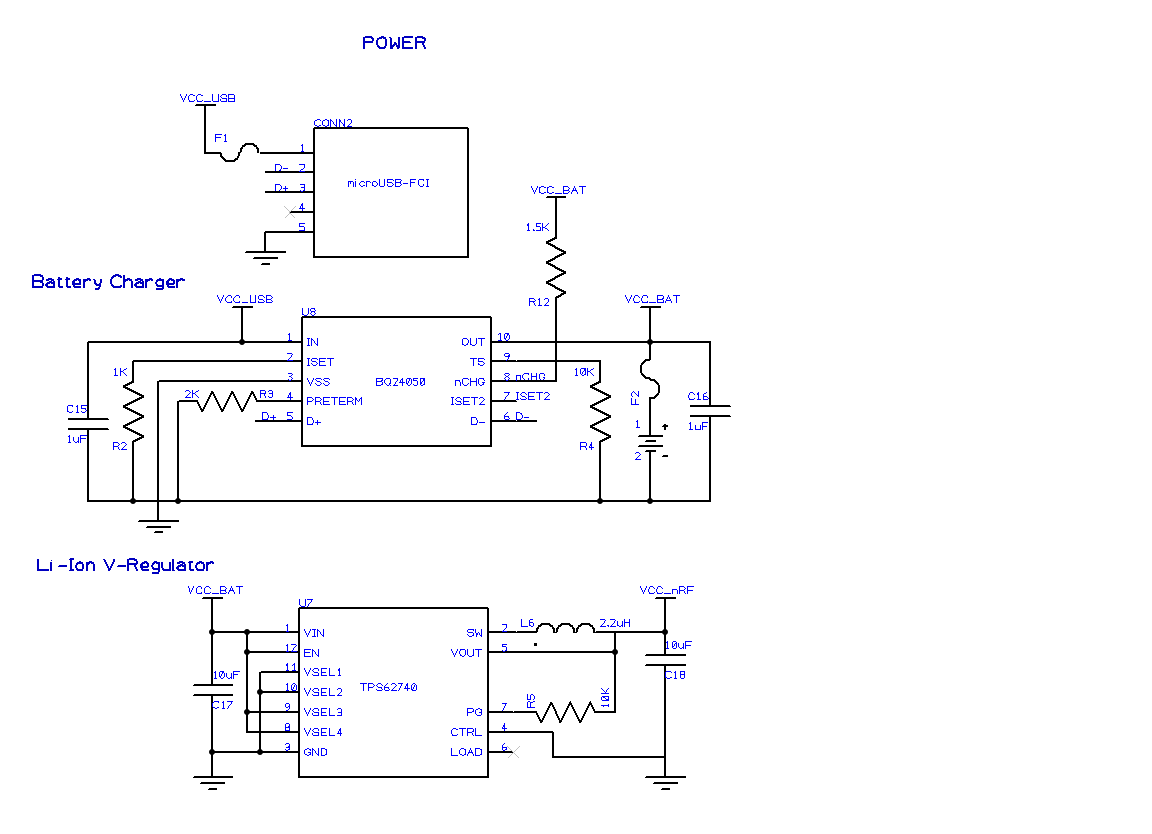Other Parts Discussed in Thread: BQ24050
We are using the TPS62740 to power a Nordic nRF chip from a Li-Poly battery source. We are measuring an abnormally high current being drawn by the TPS62740 when there should be almost no load on the Vout pin.
For our test we power the TPS62740 with 4V from a power supply connected to the Vin pin (Vcc-bat rail) in the schematic and monitor current. With the nRF in sleep mode and no load on the Vout pin (Vcc_nRF rail) we measure a current draw of about 200 uA on Vcc_bat.
We removed the TPS62740 from our board and powered the nRF chip with 3V from the power supply directly to the Vcc_nRF rail and measure 2-5 uA of current. We have done this test on 3 separate boards and gotten the same result each time.
We removed the battery charger chip BQ24050 and did not measure a significant change in the lower power current draw of 200 uA.
Does anyone know possible reasons for this extra current draw through the TPS62740?
Are there issues with our schematic?
Are there other tests we should try to help with debugging?
Thanks very much for your help.


